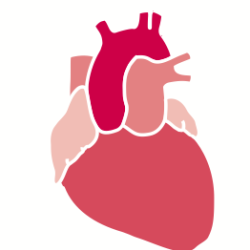Source Institutions
Source Institutions
Add to list Go to activity
Activity link broken? See if it's at the internet archive

In this activity about heart health (on page 34 of the PDF), learners measure their own blood pressure using an electronic blood pressure monitor with a self-inflating cuff (included in cost of materials) and learn about the health effects of high blood pressure. Learners also discover how to interpret the blood pressure number (diastolic vs. systolic) and healthy ranges. This lesson guide includes background information, setup and management tips, and web resources.
- 5 to 10 minutes
- 1 to 2 hours
- Over $20 per group of students
- Ages 8 - 14
- Activity, Experiment/Lab Activity, Lesson/Lesson Plan
- English
Quick Guide
Materials List (per group of students)
- Electronic blood pressure monitor with a self-inflating cuff (sold in drugstores)
- Lab notebooks
Subjects
-
Life Sciences
-
Human Body
- Circulation
- Health and Nutrition
-
Human Body
-
Mathematics
-
Data Analysis and Probability
- Data Analysis
- Data Collection
- Data Representation
-
Measurement
- Units of Measurement
- Rate
- Number and Operations
-
Data Analysis and Probability
-
Physical Sciences
-
Motion and Forces
- Gravity
-
Motion and Forces
-
The Nature of Science
-
The Scientific Process
- Conducting Investigations
- Gathering Data
- Formulating Explanations
- Communicating Results
-
The Scientific Process
Audience
To use this activity, learners need to:
- see
- read
- touch
Learning styles supported:
- Uses STEM to solve real-world problems
- Involves hands-on or lab activities
Other
Includes alignment to state and/or national standards:
Includes assesments for student learning:
This resource is part of:
Access Rights:
- Free access
By:
- Tharp, Barbara Z. ; Erdmann, Deanne B. ; Matyas, Marsha L. ; McNeel, Ronald L. ; Moreno, Nancy P.
Rights:
- All rights reserved, Baylor College of Medicine, 2009
Funding Source:
- NASA, NCC 9-58
